How To Order Your Steak
Graded and rated by a solid set of standards, learn how to order your steak so you can get the most out of your meat.
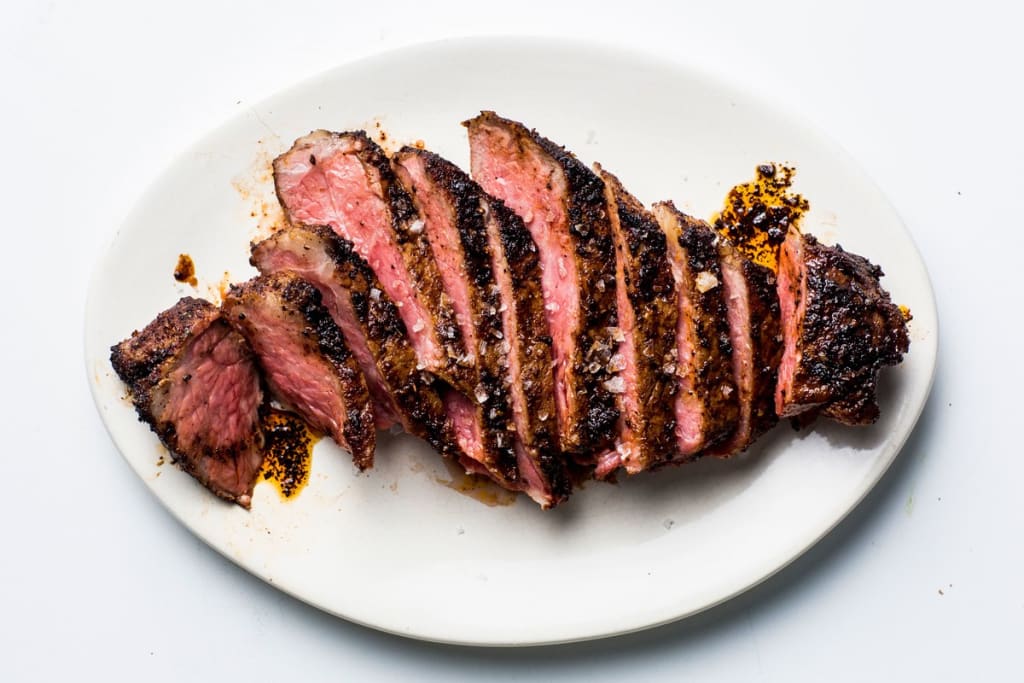
Steak is one of the few foods out there where you can become a connoisseur devoted to every step of the preparation process. Every little aspect of steak, from the meat itself to its preparation method, can be graded and rated by a solid set of standards.
Unlike other foods that are connoisseurs, steaks can be tailored and customized to your personal tastes — much like a burger. That being said, unless you're eating at a pretty terrible chain restaurant, you should learn how to order your steak like a pro.
When you learn how to order your steak like a true connoisseur, you'll soon learn that the sky's the limit on flavor and texture. Here's how to do it like a food critic, straight from a professional food critic.
First, you need to learn how to order a steak by meat quality.
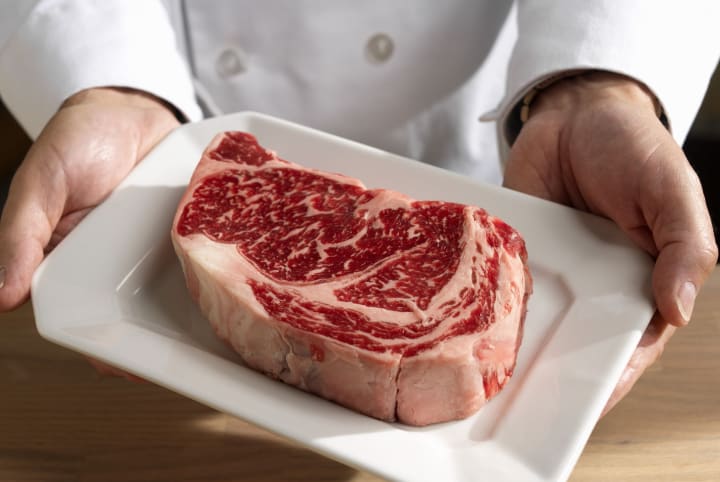
Anyone with taste buds can tell you that there's a difference between the burger meat used in McDonald's and the burger meat that's used at a Red Robin. If you have ever wondered why that is, the answer is obvious: quality.
Meat quality varies greatly from restaurant to restaurant, and the USDA actually has grades they use to sort meat by quality. This is where the phrase "Grade A" comes from, and if you're ordering from a high-quality steakhouse, this is pretty crucial to know.
USDA-graded steaks are first sorted into four main categories: prime, choice, select, and standard. The difference between these grades of meat are very visible and play a huge role in how tasty the steak is.
The following is a crash course on grades:
- Prime steaks are considered top quality steak. They tend to have visible marbling in their meat when they're raw. Marbling is fatty deposits that run throughout the meat. When cooked, the marbling adds flavor and helps keep steak juicy. It's also seen as a mark of good health in the cow and helps bring a softer yet more tender texture to steak. The problem with prime steaks is that 90 percent of them are immediately shipped to restaurants, which means getting them in stores is very difficult — and pricey. That being said, these steaks are great when broiled, roasted, or grilled, if you can get your hands on them.
- Choice steaks are close to top quality, but not quite there. Choice steaks are almost identical to prime steak, however, they may have a small imperfection or come from an older cow. They also will generally have less marbling in them. Because there's less marbling, these steaks may be a little less tender than prime cuts. Even so, they offer a great bang for your buck.
- Select steaks are good if you want something a little bit better than the regular meat in the grocery store. With select steaks, you'll still see a little bit of visible marbling coursing throughout them. However, it won't be as plentiful as in prime or choice cuts. It's still tender, but it won't have as much juice or flavor as choice or prime cuts steaks will have due to the lack of marbling.
- Standard steaks are the steaks you'll typically get in the grocery aisle filled with plastic-wrapped meats, and they have very little to no marbling through them. If you've been wondering why the steaks you buy never taste as good as the ones in restaurants, this is why. They don't have marbling, which makes them less tender and less flavorful.
Remember, the steak you have can only be as good as the primary ingredient in it: the meat itself. If you want an incredible steak, get a prime cut.
There's something that many steak aficionados don't know about steak — but should.
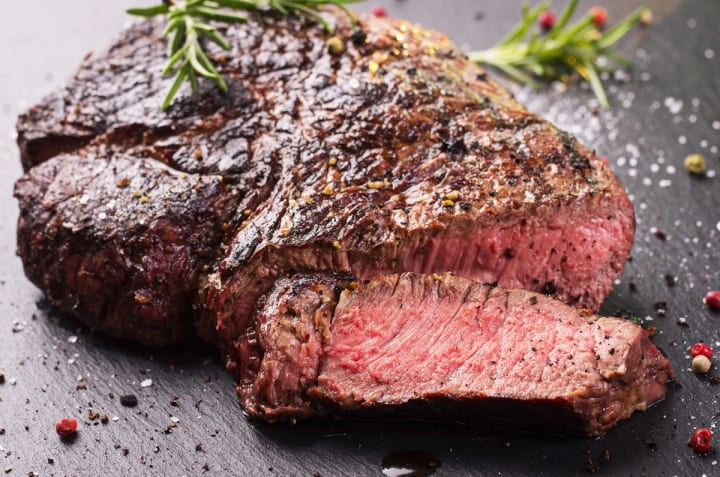
These days, steak is not just steak. It doesn't always "just come from a cow." Sometimes, the cow breed can make a huge difference in the flavor, marbling, and prep time used in your steak.
Because the meat industry and food industry is constantly competing to cater to the upper ranks of food aficionados, there are now entire industries based on serving steaks from a particular breed of cow.
The three most popular breeds of steak cattle being raised exclusively as a way to gain interest from discerning diners are Angus, Wagyu, and Kobe. Here's what you need to know about each breed, and how it can impact your steak:
- Angus. You might remember the Angus burger craze from the fast food wars a few years ago, and you might have been curious as to why people order it. Angus cows were first raised in Scotland, and are known for having strong muscles that can last through winters. The marbling tends to be better than regular cows — but that's not a guarantee. The USDA does not take species into consideration when grading beef. However, the fact that you can often trace Angus heritage by farm tends to make people feel more comfortable with the meat, and statistically, marbling from Angus beef is better. The end result is a juicier, more tender steak than what you'd get from many standard and select steaks. That being said, the food industry is famous for lying about Angus beef, so if you do order Angus, there's no guarantee that it's actually Angus beef unless it's Certified Angus Beef.
- Wagyu. Originating in Japan, Wagyu beef is considered to be one of the best meats in the world. Its marbling is far, far heavier than what is necessary to make prime grade in the US, and that means that the steak tends to be insanely juicy and tender. Though there are farms in America that do raise Wagyu cattle, they are rare — and finding this in a store is borderline impossible. Even most major restaurants will not have Wagyu steak, so if you find it, expect to pay an exorbitant price.
- Kobe. You might have heard about Kobe beef before. It's considered to be the absolute gold standard of beef, and much like Wagyu, originates in Japan and is celebrated for its marbling. Kobe beef is even more marbled than Wagyu, and can sell for as much as $300 per pound or more depending on the cut. Much like with Angus beef, restaurateurs and food industry members are infamous for lying about serving Kobe beef. In fact, only eight or nine restaurants in the entire United States sell Kobe beefon their menu. So if you are seeing it on the menu, it's safe to say that they are lying to you. It's also worth noting that all Kobe beef, without exception, is sold boneless. If you order a $350 Kobe steak, and it has a bone in it, then it's not real Kobe.
Part of learning how to order your steak is learning not to fall for many of the classic gimmicks restaurants use to increase the price of an otherwise regular steak. Now that you know the truth behind the beef, you can make a more educated decision on ordering the right meat at a good price.
Now, let's talk about aged beef, and how to order your steak by aging.
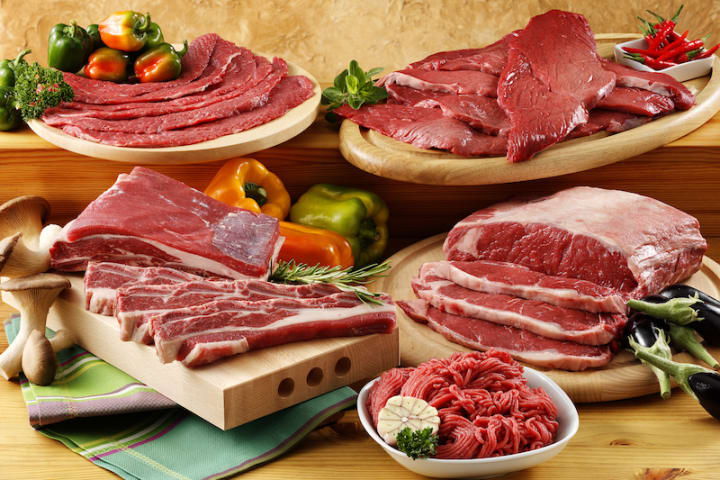
If you've gone to upscale steakhouses before, you may have noticed notes about how they only use "prime dry aged beef."
We've already discussed what "prime" means, so let's talk about what it means to eat a dry aged steak. Steak aging is the way that the steaks are shipped to the grocer or restaurant — and how they are stored.
When an animal dies, the enzymes in its body undergo a change called rigor mortis. This makes the meat tough for the first 12 hours after the animal's death. In order to make meat softer, it has to be left out for at least a day or two before it's edible. This is what they call aging.
Most beef is aged in shipment before it's sold, but in some cases, groups may continue to age the beef so that they get a more tender and flavorful cut. There are two ways to do this: wet aging, and dry aging.
- Wet aging is the most common way to age beef. This involves keeping the meat in vacuum-sealed bags in boxes, at around 35 degrees for a period of up to 30 days. This allows the enzymes to tenderize meat and bring out the flavor. Wet aged beef is generally less expensive than dry aged beef.
- Dry aged beef is rarer but is often considered to be more flavorful. In this method, larger hunks of meat are hung up in a specially sanitized, room at around 35 degrees, with humidity levels being around 70 percent. Then, they are left there for 7, 20, 30, or 60 days. Dry aging is considered to be the better route because the meat becomes more condensed — and the enzymes tend to stay intact better, too.
- Some restaurants say that their meat is fresh rather than aged. This is not actually a good thing. It either means that the restaurant doesn't know what it's doing, or that the meat is still very tough due to rigor mortis.
Believe it or not, there are also more terms that you should know when learning how to order your steak in full.
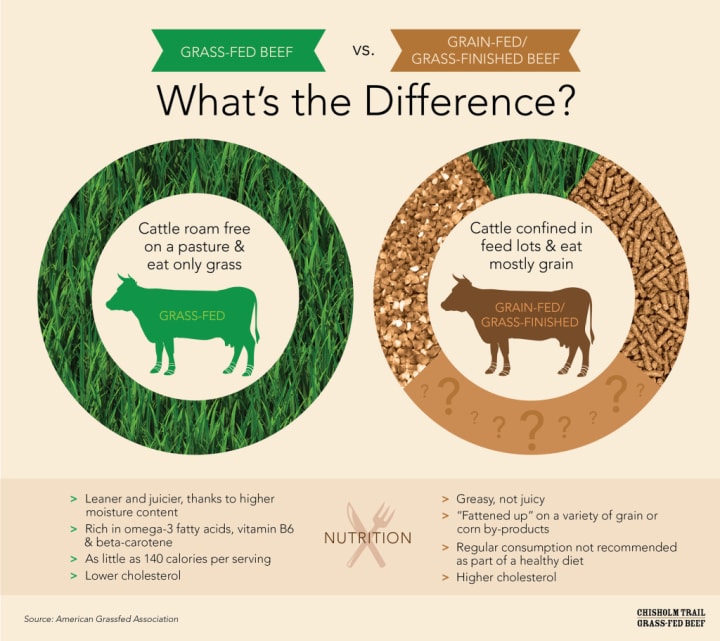
You might also see a number of other terms in steakhouse menus that might confuse you. Here's what you should know about what they mean, and what terms you should avoid.
- Halal and Kosher steaks are cuts of meat from cows that were slaughtered according to the methods described in the Koran or the Torah. Many people believe these steaks to be better in terms of flavor and tenderness due to the way that they were prepared. This is solely based on anecdotal evidence, but it's worth a try if you're new to it.
- Avoid blade tenderized beef at all costs. Blade tenderized beef are steak cuts that have been tenderized using machinery that stabs the meat and cuts through tendons. Sounds great, right? Not really. The problem with blade tenderized beef is that a lot of beef pathogens tend to hang out on the surface of steaks. This method of tenderizing ends up injecting those pathogens into the meat, which means that you get a higher risk of food poisoning from these steaks. In the span of six years, an estimated 3,500 people got sick from steaks that were blade tenderized. Don't be one of these people.
- Natural beef is beef that cannot be treated with hormones or antibiotics. However, unlike organic beef, the cattle that make natural beef may be raised and fed like normal standard cows.
- Organic beef is beef that doesn't get exposed to hormones, antibiotics, has unrestricted outdoor access, and is fed a diet of grains and grass exclusively. This is good for the health of the cow, and also for its flavor. You can pick up organic steaks at Whole Foods for cheap — sorta.
Now that you know the terms of the trade, it's time to actually learn what kind of steak you're ordering.
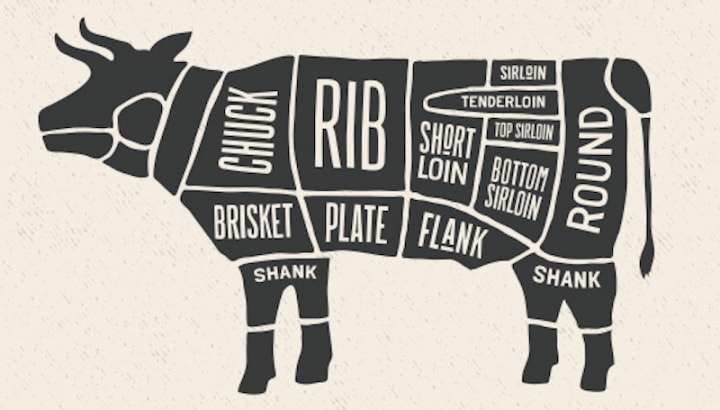
As you probably already know, there are different cuts of steak you can choose from. Here's the run-through of steak cuts, and what each one means.
- Rib eye steaks are known for their flavor and tenderness — but can be tricky to cook at times. A good rib eye steak will give you a huge burst of juiciness at a decent price compared to other cuts of meat. Many high-end steakhouses have rib eye steaks because they're considered to be one of the best cuts of meat in terms of flavor. This is a steak that is best enjoyed at a restaurant. This is also known as a "Beauty Steak," an "Entrecote," a "Spencer Steak," or a "Delmonico Steak," depending on where you go.
- Strip steaks are known for having good marbling, a beefy flavor, and being just a little bit chewier. For people who love a more substantial texture to their steak, nothing can beat a strip steak. They're great to cook, and if done right, are easily one of the best ways to experience the full flavor spectrum of meat. They're also called "New York Strip Steaks," "Kansas City Strip Steaks," as well as "Top Loins."
- Tenderloin steaks tend to be the most tender and buttery section of the steak, and are a restaurant's favorite cut. Often sold under the name of "filet mignon" or "Chateaubriand," these cuts of meat are often smaller but jam-packed with juiciness and texture. Tenderloins do best with steak butter or steak sauces.
- T-bone steaks, also known as Porterhouse steaks, are actually a combination of strip steak and tenderloin steak, separated by a bone. This is the "best of both worlds" cut, and is what people think about when they hear the word "steak." These are the steaks people choose when they want to get glamorous food photos, primarily because they look expensive — and are expensive.
Those are the big four cuts you need to know. So, let's get to talking about ordering it by cooking method.
Now, let's talk about how to order your steak by cooking method.
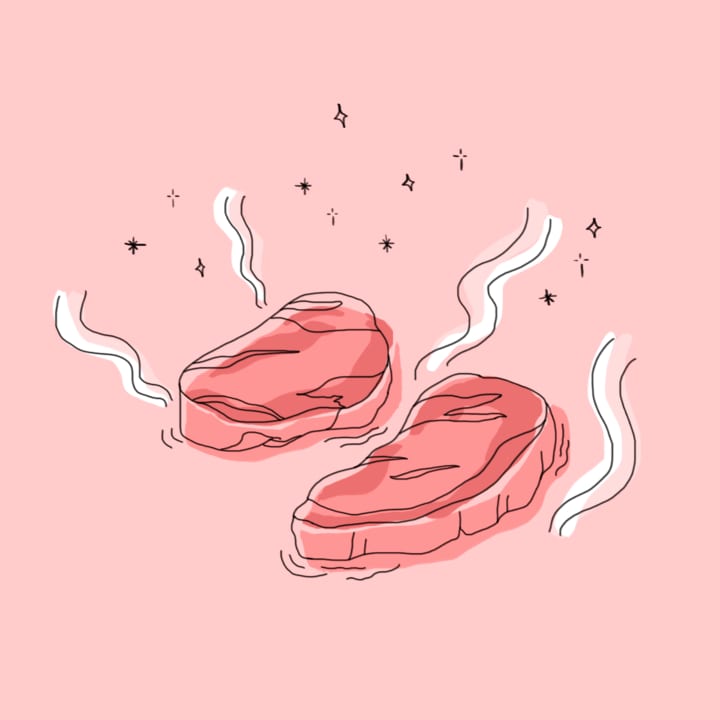
After you've decided which steak grade, cut, and aging method to order, it's time for the grand finale — choosing your cooking method. Even the worst chain restaurants will typically ask how you like your steak cooked, so to a point, you probably already know a little bit about steak cooking terms.
Even so, there's probably one or two methods you might not know. Here's the full run-through of how to order your steak's cooking method.
- Well-Done: This means that there is no pink in the middle of the steak. The steak should not be burned on the outside but should have an internal temperature around 170 degrees. This steak can be somewhat tough in terms of texture and is rarely juicy. A lot of people consider this "a waste of steak" because the beefy flavor might get lost by bad cooking technique.
- Medium-Well: Just a notch less cooked than a well-done steak is a medium-well steak. This means that its internal temperature will be around 165 degrees to 155 degrees. There's a little bit of pink in the center, and it's slightly tastier.
- Medium: Medium steaks are generally the "sweet spot" for most people, with an internal temperature of 150 degrees. If you're ordering steaks for a group, this is a surefire people pleaser. They're juicy and tender, but still pack a lot of flavor without freaking people out due to the cooking time.
- Medium-Rare: Most people confuse medium steaks with medium-rare steaks, and to be fair, it's a very easy mistake to make. Medium rare steaks tend to have a decent amount of pink and red in the center. These steaks tend to be around 140 degrees with a lighter outside. Generally speaking, food critics choose this steak doneness to critique cooking skill.
- Rare: Rare steaks are the closest to raw that most restaurants will serve. They should be lightly charred on the outside, have a small ring of pink near the outside and be totally red inside, with a temperature of around 130 degrees. This steak is often extremely juicy, beefy, and flavorful — but may have a slightly chewier texture than what some may feel comfortable with.
- Blue Rare: Due to the potentially dangerously low cooking temperature and the potential for it being improperly cooked, this is actually really difficult to find in restaurants. These steaks are served at around 115 degrees or less and have almost zero pink rings around the outside of the steak. Inside, the steak is almost purple because it's almost raw. This steak's meat can be gel-like and difficult to chew because the heat hasn't unlocked the softness yet.
- Black And Blue: Much like blue rare steak, black and blue steaks are almost exclusively found in very high-end venues because of the skill it takes to do them. So, if you know how to order your steak black and blue, most restaurant waiters tend to assume that you know what you're talking about when it comes to food. Black and blue steaks are heavily charred on the outside with a deep red interior, which gives you the juiciness of a blue rare steak without the overly chewy interior. If you like a good "bite" to your steak, this is a must-try. It's also worth noting that this is occasionally called a Pittsburgh steak.
Now you know how to order your steak like a professional food critic.
Too often, ordering a steak can be made out to be this complicated, intimidating mess — but it's really not. It all boils down to knowing steak terms and personal tastes. Once you know the terms, you can figure out how to order your steak the way you like it, rather than the way everyone tells you to enjoy it.
About the Creator
Ossiana Tepfenhart
Ossiana Tepfenhart is a writer based out of New Jersey. This is her work account. She loves gifts and tips, so if you like something, tip her!





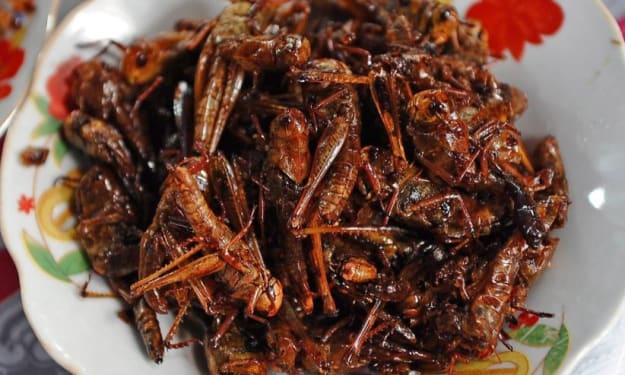

Comments
There are no comments for this story
Be the first to respond and start the conversation.